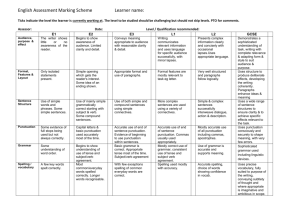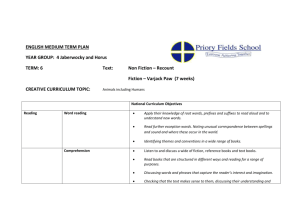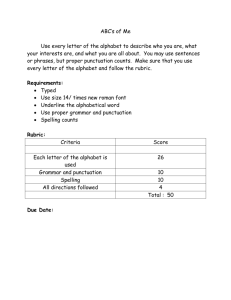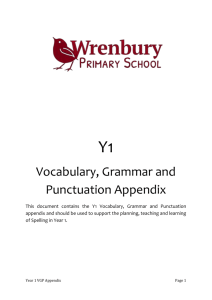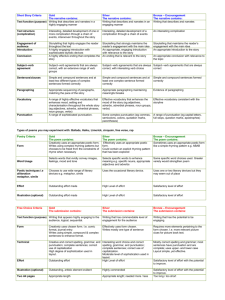Functional Skills Diagnostic Writing Assessment Mark Scheme
advertisement
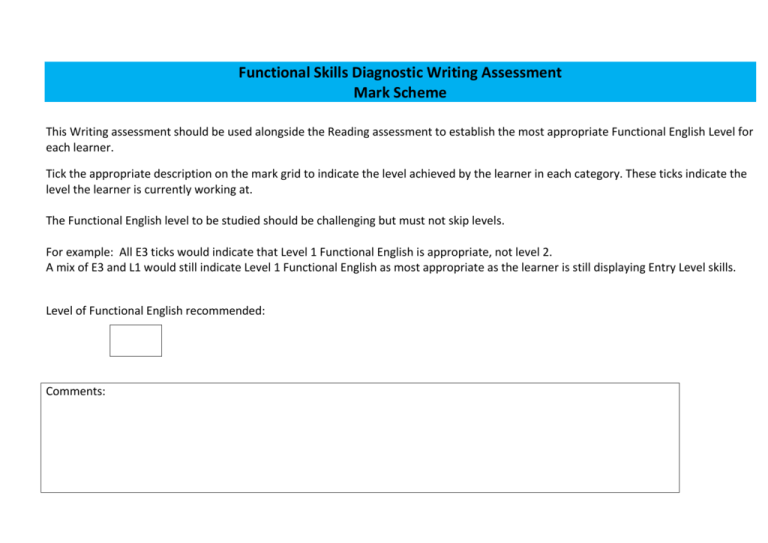
Functional Skills Diagnostic Writing Assessment Mark Scheme This Writing assessment should be used alongside the Reading assessment to establish the most appropriate Functional English Level for each learner. Tick the appropriate description on the mark grid to indicate the level achieved by the learner in each category. These ticks indicate the level the learner is currently working at. The Functional English level to be studied should be challenging but must not skip levels. For example: All E3 ticks would indicate that Level 1 Functional English is appropriate, not level 2. A mix of E3 and L1 would still indicate Level 1 Functional English as most appropriate as the learner is still displaying Entry Level skills. Level of Functional English recommended: Comments: Name of Learner……………………………………....................................... Date……………………….......... Programme………………………………….................................................. E1 E2 Assessor………………………… E3 L1 L2 Audience, purpose & effect The writer shows little or no awareness of the reader. Begins to show awareness of audience, with some appropriate information. Limited clarity and detail. Conveys meaning appropriate to audience with reasonable clarity, information & detail. Writing communicates relevant information and uses language for specific audience successfully, with minor lapses. Developed level of appropriate detail. Able to present complex information/ideas clearly and concisely with occasional lapses to sustain the reader's interest throughout.Uses language for the specific purpose throughout e.g. persuasive/formal. Format, Features & Layout Only isolated statements present Simple opening which gets the reader's interest. Some idea of an ending shown, however simple. Ideas are sustained and in the main, logically sequenced/organised. Beginnings of use of paragraphs Reasonable conclusion. Paragraphing is appropriate & helpful in clarifying the organisation of the text. Format features mostly relevant to task e.g. letter Good, strong introductory paragraph. Well organised, sequenced middle paragraphs. Endings are directly related to main theme. Sentence Structure Use of simple words and phrases. Some simple sentences. Use of mainly simple grammatically correct past tense statements usually starting with subject & verb. Some compound sentences using simple connectives. Use of both simple and compound sentences using simple connectives. (i.e. and, but, or). More complex sentences are used using a variety of connectives (e.g. although, however). Simple & complex sentences successfully interweave dialogue, action & description. Punctuation Some evidence of full stops being used but not always correctly. Capital letters & end of sentence punctuation used accurately most of the time. No evidence of punctuation within sentence. Accurate use of end of sentence punctuation e.g. !?. Evidence of beginning to use punctuation within sentences, but not always used accurately. Accurate use of end of sentence punctuation. Commas usually used appropriately. Speech marks used but not always accurately. Mostly accurate use of all punctuation including commas, apostrophes, speech marks (including punctuation within speech marks). Minor lapses. Grammar Some understanding of word order. Writer is beginning to show understanding of use of tense and subject/verb agreement. Mainly speech conventions used. Basic grammar is correct. Appropriate tense most of the time. Subject/verb agreement (e.g. I was, we were). Mostly correct use of grammar, consistent use of tense and subject verb agreement. Use of grammar is mainly accurate and supports meaning. Spelling A few key words spelt correctly. Reasonable attempt at other key words. Unfamiliar words are recognisable. Most common/everyday words spelled correctly (e.g. what, all, from, numbers to 20,days of week). Longer words recognisable. With few exceptions spelling of common everyday words are correct. Spelling used mostly with accuracy, with some lapses. Accurate spelling of common everyday words, choice of words showing confidence to spell not only the easiest words to spell. Presentation Overall, disjointed or uneven but showing some features of legibility. Mix of upper & lower case letters. Overall handwriting is legible but with some variation in size & position. A legible, reasonably neat text. A legible, neatly presented text. A legible, neat text with a minimum of alterations.
